Recent releases from the BFI, part two
In addition to the BFI disks mentioned in my previous post, I’ve watched three more recent releases, in this case, though, movies I’d already seen. In one case, Ken Russell’s Gothic (1987), I hadn’t seen the film since its theatrical release. The others are upgrades of disks I already owned.
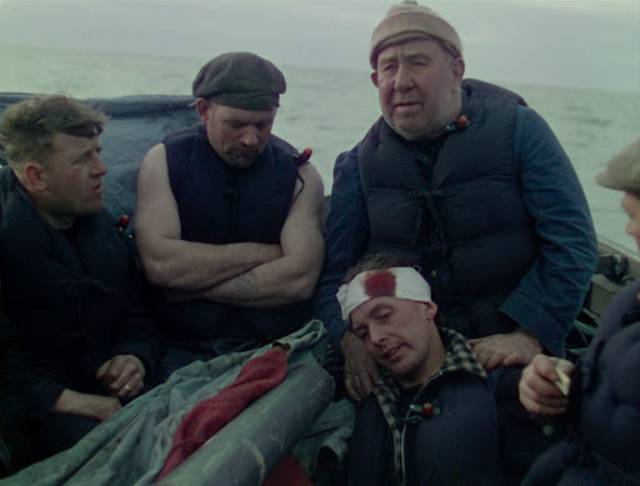
Western Approaches (Pat Jackson, 1944)
Pat Jackson began his career as a production assistant and editor on documentary shorts during the 1930s. This was a period of experimentation and innovation in documentary in Britain – his first credit was as an assistant on the legendary Night Mail (Basil Wright and Harry Watt, 1936) – and he began to direct at the end of the decade just before war broke out. The usefulness of movies as a tool for education had been well established; with the outbreak of war, education blended with propaganda and filmmakers quickly turned out numerous films to inform the public and reinforce commitment to the fight even as conditions became grim with the defeat in France in 1940, and the Battle of Britain and the Blitz rendered life in the cities increasingly dangerous.
Quite quickly, narrative techniques were incorporated into documentaries to increase their impact, blurring the distinctions between fact and fiction. When filmmaker Harry Watt scored a hit with Target for Tonight (1941), a depiction of the planning and execution of a bombing raid on Germany which incorporated dramatized scenes using actual people in their actual roles with documentary footage shot on the planes flying the mission, the navy decided they needed a film of their own to show what they were doing in the North Atlantic
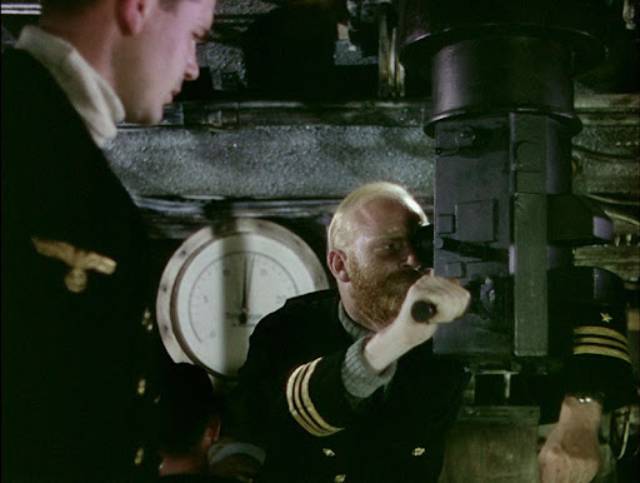
Jackson himself had made films to encourage workers on the home front to see themselves as a crucial part of the war effort, and having just made Ferry Pilot (1941), an excellent half-hour film about the civilian pilots of the Air Transport Auxiliary who moved planes around the country to keep the RAF functioning, he was given the assignment. Because of a number of decisions, the production eventually took three years to complete, finally being released in 1944, after the events it depicted had largely come to an end. Perhaps the most ambitious aspect of the project was the decision to shoot it in Technicolor, complicating filming as the three-strip cameras were huge and heavy and difficult to manoeuvre, which seemed antithetical to the needs of documentary, particularly in difficult situations. Luckily, Jackson had Jack Cardiff, one of the early masters of Technicolor, to shoot for him.
The initial purpose of the film was to show the work of the Merchant Navy whose convoys brought crucial supplies from the United States to Britain, crossing the Atlantic whose natural dangers were greatly exacerbated by German U-Boats. But it was decided that a more compelling narrative was needed and Jackson devised a story about men from a torpedoed ship surviving on the ocean on a lifeboat with limited supplies and limited means of communication. When the boat is spotted by a German submarine, the enemy lurk nearby hoping to intercept any ship which comes to the rescue. That ship eventually turns out to be a freighter separated from its convoy escort, leading to a tense encounter and a brief firefight between the freighter and the U-Boat.
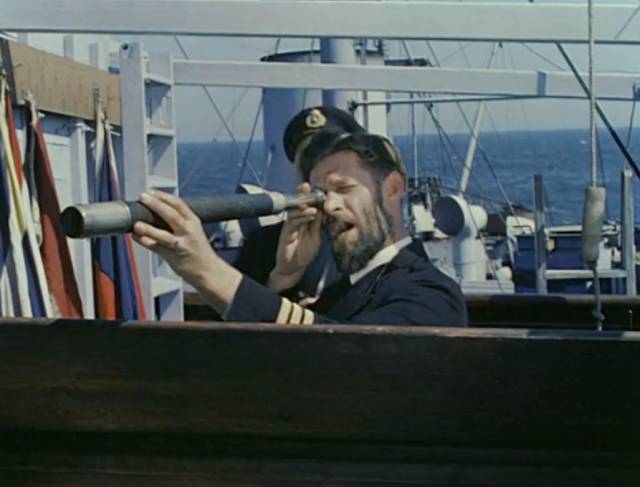
With the Navy providing resources, Jackson shot on various ships – from loading in New York to the open ocean – including a captured submarine. Scenes with the submarine crew were shot in unsubtitled German for added authenticity. But the heart of the film are the scenes in the lifeboat, shot over a period of months on open water off the West coast of Britain with actual sailors and officers “playing” the men, who deal with dwindling rations, injury and sickness, as the boat is tossed by frequently high seas. When compared to Alfred Hitchcock’s Lifeboat (1944), shot with seasoned actors in a studio water tank, Jackson’s achievement – and the difficulties he faced – seem even more remarkable. It all plays with a low-key naturalism rendered in frequently spectacular images.
Western Approaches is a rousing adventure which strays quite far from the tenets of the British documentary movement, yet conveys the experience of naval personnel more vividly than a mere documentary record ever could. It’s perhaps not surprising that after the war Jackson stuck to dramas – theatrical films through the ’50s, then increasingly in episodic television in the ’60s and ’70s.
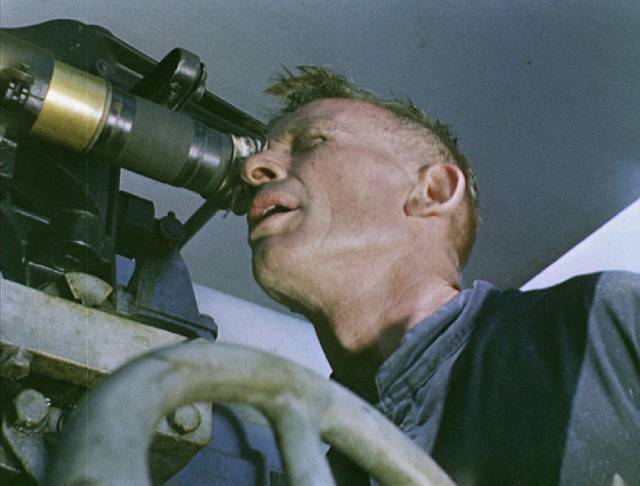
Originally released on DVD by the Imperial War Museum in 2004, the film has been restored in high definition from the original three-strip Technicolor negatives, with an original print sourced to fill in where the negative was damaged in a couple of places. Although there is occasional unevenness (a grainier single-strip stock was used for shooting on the ships in the convoy), the film looks quite amazing. At the time, Technicolor was largely used in the controlled environment of the studio (overseen by Technicolor “advisors” who maintained a tight proprietary control over the process), making what Jack Cardiff achieved all the more remarkable.
Extras include the commentary recorded for the DVD release with Jackson in conversation with Toby Haggith; Jackson’s Ferry Pilot and Builders (1942); John Taylor’s short People at War: A Seaman’s Story (1943), in which a Newfoundland sailor recounts the four times he’d survived being torpedoed as he prepares for his next voyage; This Is Colour (1942), a promotional film with Cardiff demonstrating Technicolor’s possibilities; Ronald Riley’s Steel (1945), a documentary promoting Britain’s steel industry featuring spectacular Technicolor imagery (Cardiff yet again) shot in mills which seem simultaneously hellish and awe-inspiring. There’s also a brief piece, shot in 1999 and edited in 2023, in which Jackson and Cardiff discuss their experiences on Western Approaches.
*
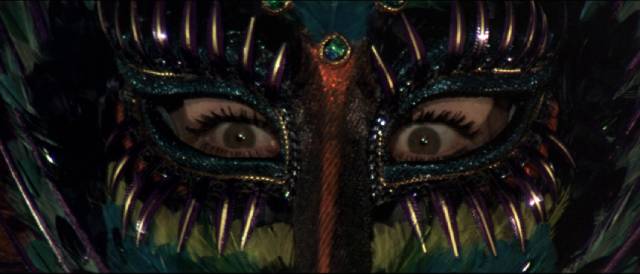
The Ballad of Tam Lin (Roddy McDowall, 1970)
I first saw – and wrote about – Roddy McDowall’s The Ballad of Tam Lin (1970) a decade ago, when I finally had a chance to see it on an Olive Films Blu-ray. That bare-bones release has now been rendered obsolete thanks to the new BFI Flipside disk, which itself is a British version partly drawn from a 2021 disk from Imprint in Australia. It borrows several extras from that release, while dropping one of the commentary tracks and a few featurettes and adding several new interviews recorded for this edition. In comparison with the Olive Films disk, this new one has more than three hours of extras in addition to the commentary by Vic Pratt and Will Fowler, a wealth of material given the film’s original box office and critical failure, which led to it quickly sinking into obscurity for decades.
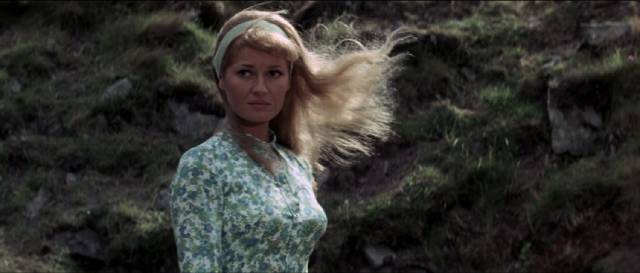
That failure had a number of causes, not least the rocky state of the British film industry at the end of the ’60s and a dependence on foreign financing. Business rather than creative issues held up release and by the time it saw a limited theatrical run, it was already a couple of years old and its “swinging sixties” trappings seemed dated. It also didn’t help that distributor American-International Pictures had re-edited it, cutting out some twenty minutes, and retitled it The Devil’s Widow in an attempt to suggest that it’s more overtly a horror movie than it actually is.
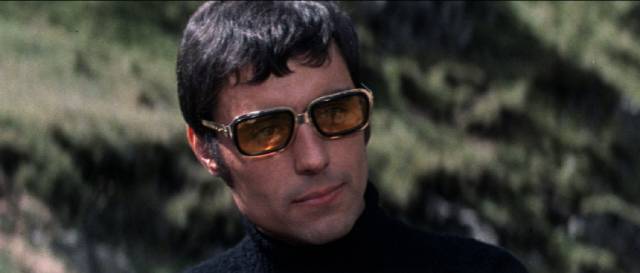
Although it certainly has ties to the folk horror which was emerging at the time, based as it is on an old legend from the Scottish borderlands about a young man who becomes entangled with the Fairy Queen, perhaps its closest cinematic relative is Robert Thom’s Cult of the Damned aka Angel, Angel, Down We Go (1969), another movie featuring a major star from old Hollywood (in that case Jennifer Jones) which presented a jaundiced view of the decade’s youth revolution and freer attitudes towards sexuality. Both movies coincided with what seemed like the death of a dream of social change towards the end of 1969 with the Tate-LaBianca murders and the violence during the Rolling Stones concert at Altamont. The image of hippy hedonism had soured.
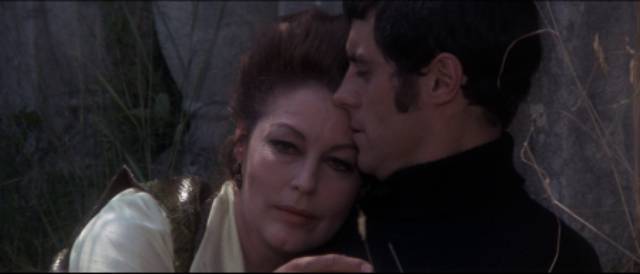
When movies are so clearly rooted in a specific moment, they date quickly, appearing absurd or even embarrassing. But decades later, their specificity is what makes them so interesting – they become cultural time capsules, but distance also makes it possible to see them for their particular qualities as creative works. The Ballad of Tam Lin was Roddy McDowall’s first – and only – directorial effort and despite some unevenness it displays considerable assurance. Having been an actor himself since childhood, there’s an air of generosity towards his cast, unlike the sour cynicism of Thom.
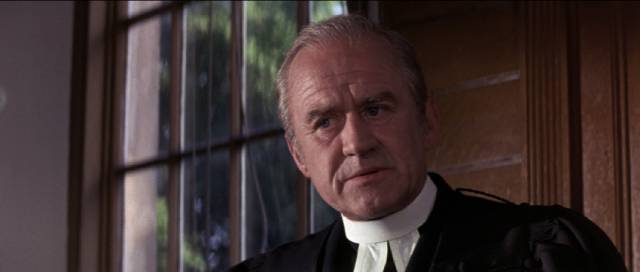
In particular, the film is an obvious love letter to Ava Gardner, who in her late forties was, by Hollywood standards, well past her best-by date. (It’s not surprising to learn that the role was originally intended for McDowall’s long-time friend Elizabeth Taylor, who had to bow out due to a scheduling conflict.) Despite a hard life and a lot of alcohol, McDowall and cinematographer Billy Williams invest Gardner with all the golden age glamour they can muster, and she rises to the occasion with a fine performance which is not only rife with sexual allure, but convincingly suggests that she may well be an ageless supernatural figure feeding off the youth of her lovers, whom she fatally discards once they’re no longer useful. And yet this is very different from the “hag horror” movies from earlier in the decade which had become something of a haven for aging actresses like Joan Crawford, Bette Davis, Olivia de Havilland and Shelley Winters; director and cinematographer take great pains to preserve the star’s air of glamour, even if it is put in the service of malevolent intent.
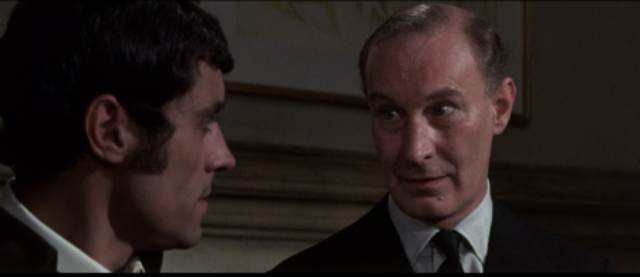
Gardner is also well-matched by an excellent cast of established character actors (Richard Wattis, Cyril Cusack, Fabia Drake) and relative newcomers (Joanna Lumley, Sinéad Cusack, Jenny Hanley, Madeline Smith, Bruce Robinson). Most importantly, the other two points of the triangle at the pinnacle of which her Michaela Cazaret weaves her deadly erotic web are played by a young Ian McShane and Stephanie Beacham, both of whom radiate star power. McShane is Tom Lynn, Michaela’s latest lover, very much under her spell until he meets Beacham’s Janet Ainsley, the daughter of local vicar Julian Ainsley (Cyril Cusack) – and yes, her position as an age-old music hall joke does come into play at a critical moment. Experiencing an awakening of authentic love, Tom breaks Michaela’s hold over him, triggering her wrath which eventually plays out in a hallucinatory Wild Hunt as he’s pursued through dank woods by the Queen’s fairy horde, until saved by Janet whose innocence defeats Michaela’s malevolent power.
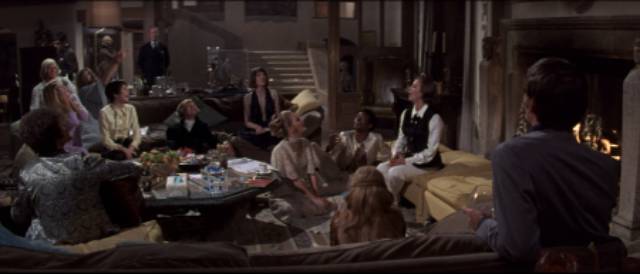
McDowall was an enthusiastic photographer (he published a number of books of candid portraits of his Hollywood friends and acquaintances), so it’s not surprising that the film displays an eye for striking imagery – there are a number of moments with small figures traversing the English landscape which evoke a mystical sense of ancient forces impinging on the present. There are also moments in which McDowall experiments in ways which are interesting if not entirely successful. The critical sequence on which everything hinges, when Tom and Janet meet beside a stream and fall in love (and apparently have sex which leads to her problematic pregnancy) is mostly constructed from stills, which seems rather jarring, even alienating, and yet in retrospect it has an interesting effect on what would have been a fairly conventional sequence.
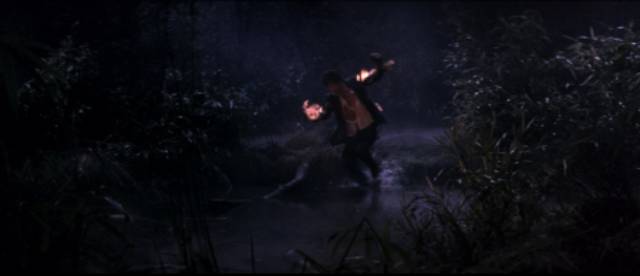
The stills isolate the characters’ expressions, pin-pointing the progression of emotions from suspicion and shyness, through stages of nervousness, interest, tentative humour and warmth, to attraction and desire and finally a sense of ease and physical comfort. The technique is awkward and yet its alienating effect prevents a rote response to the scene’s conventional content and raises the budding relationship to something archetypal and more appropriate to the mythical subtext of the narrative. Given that apart from Tom’s climactic flight under the influence of some hallucinogenic drug there are no overtly supernatural elements, a sequence like this helps to de-normalize the story, facilitating the air of myth rooted in the ancient folktale which is otherwise only referenced in a brief moment of narration at the beginning of the film and in the score which uses songs by folk-rock group Pentangle based on that tale to comment on events as they occur.
With the film’s revival on disk over the past decade, and particularly in these stacked editions from Imprint and the BFI, The Ballad of Tam Lin can be seen now as a significant contribution to the folk horror genre which emerged in Britain in part from the social upheavals of the ’60s as many people sought to replace moribund conventions with traditions rooted in a (largely mythical) pagan past.
*
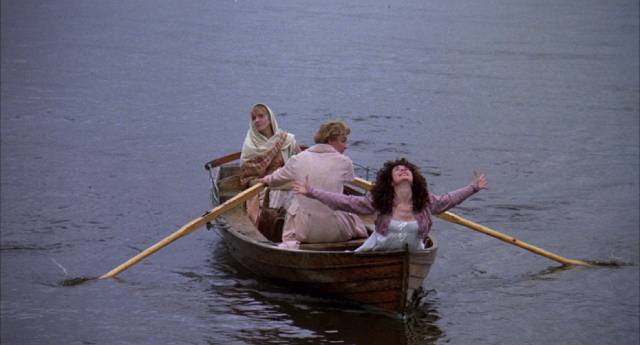
Gothic (Ken Russell, 1987)
My first encounter with the work of Ken Russell was the theatrical release of The Devils in 1971. I’d heard of, but not seen, Women in Love (1969) and The Music Lovers (1971), and had a vague idea of the conflicting opinions held by critics of his films. The Devils was overwhelming and, although his subsequent work is undeniably uneven, I became a confirmed fan and defender. I was willing to embrace his wildest excesses (Lisztomania [1975]) because his work emerged from a point of artistic conviction which seldom wavered. If I was occasionally disappointed, I’ve found my opinions becoming more favourable in retrospect – time to re-watch and reevaluate Valentino (1977), perhaps, and track down Savage Messiah (1972), which I’ve never seen.
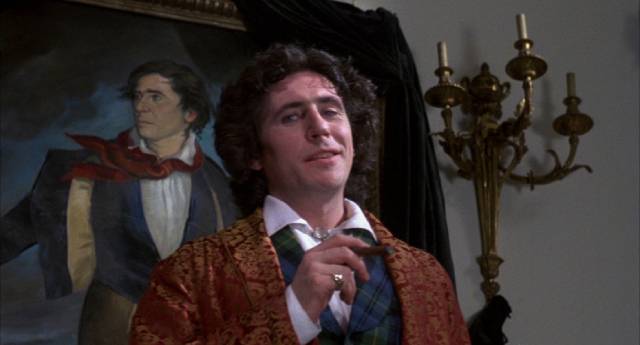
In my mind, Russell’s golden age was the 1970s, with a little spillage into the ’80s – say from Women in Love to Crimes of Passion (1984) – but he was doing interesting work from the mid-’50s through the ’60s – work I only saw much later when his BBC documentaries and early features turned up on DVD – and continued to make movies and television until a year or two before his death in 2011. I haven’t seen much of the later work, which continued his interest in literary adaptation and the lives of composers; despite his reputation, he did manage to find backing for projects for more than two decades after the commercial failure of Crimes of Passion, though he never again achieved the cultural weight of the ’60s and ’70s.
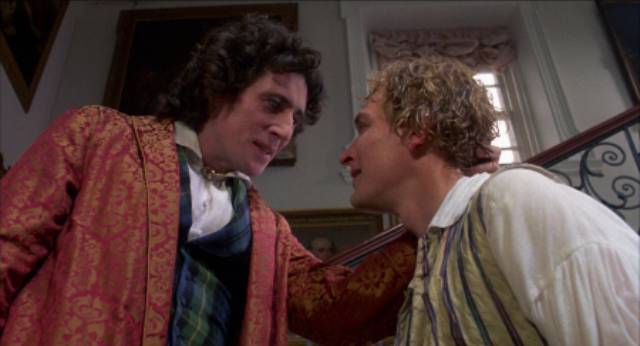
I only have a vague memory of seeing Gothic (1986) on its original release and I’m not sure why it didn’t leave much of an impression. It has many of the hallmarks of classic Russell – visually flamboyant, emotionally overwrought, conflating the private lives of artists with the content of their work, all brought to a boil in the excesses of classical romanticism. For his first produced script, writer Stephen Volk imagined a single phantasmagoric night during which Lord Byron, Percy Bysshe Shelley, Mary Wollstonecraft and her stepsister Claire Clairemont, and Dr. John Polidori revel in their various neuroses and manifest their individual fears as horror stories which they tell one another. This was the 1816 house party at Villa Diodati in Switzerland which generated the story of Frankenstein (along with Polidori’s The Vampyre, which provided the seed for an entire genre). Mary was just eighteen when she began to write her story about a student who infuses a corpse with life.
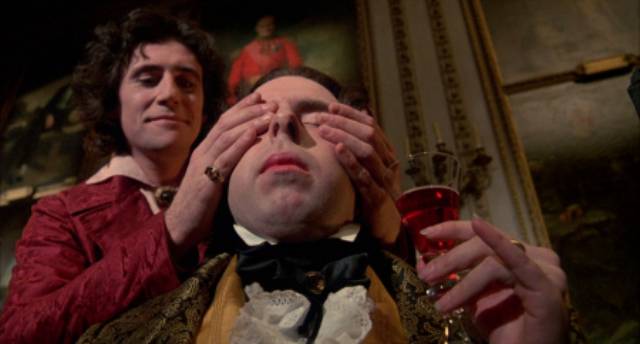
In reality, the party lasted all summer on the shores of Lake Geneva; in the film, Byron’s guests arrive in the afternoon and spend the night descending into a feverish psychodrama rooted in a morbid conflation of romance and death – Mary was still suffering the consequences of a recent miscarriage, her grief giving rise to the fantasy of reviving the dead. If all this seems to simplify the creative process, Russell invests the material with his feverishly romantic excesses in which every moment, every clash of sensibilities, every revelation of psychic pain is manifest in flamboyant visual gestures, the actors displaying their emotions on their period-costume sleeves.
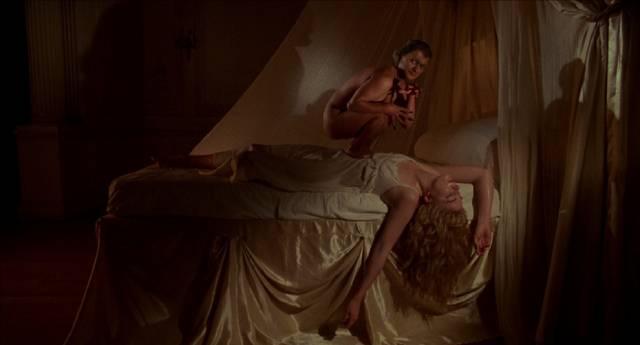
While the historical details are merely a starting point, Volk and Russell use that summer’s events to evoke the essence of Gothic romanticism’s conflation of love and death, its savouring of the pain of longing and loss, the desire to experience exquisite pain in order to feel alive. In this, the film benefits greatly from Mike Southon’s lush cinematography and the excellent cast who throw themselves into the project whole-heartedly – Natasha Richardson as Mary, Julian Sands as Shelley, Gabriel Byrne as Byron, Myriam Cyr as Claire and Timothy Spall as Polidori.
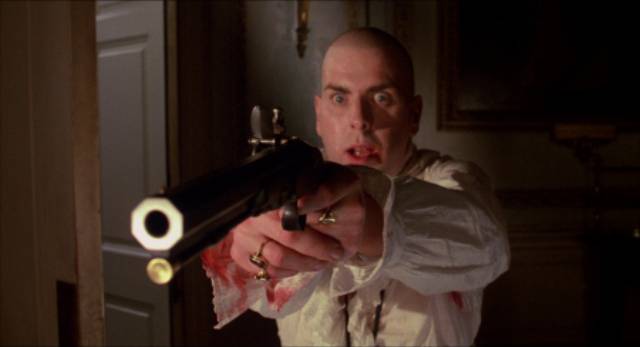
Returning to England after a troubled spell in Hollywood which nonetheless produced two of his best films (Altered States [1980] and Crimes of Passion), Russell had spent two years making music videos and a television production of Gounod’s Faust before being offered Volk’s script, which he immediately embraced as an opportunity to get back to his passion for the Romantic period and the mysteries of artistic creation. Paradoxically, he used a period-inappropriate synthesizer score by Thomas Dolby, which may have been good for the budget but doesn’t always fit comfortably with the material.
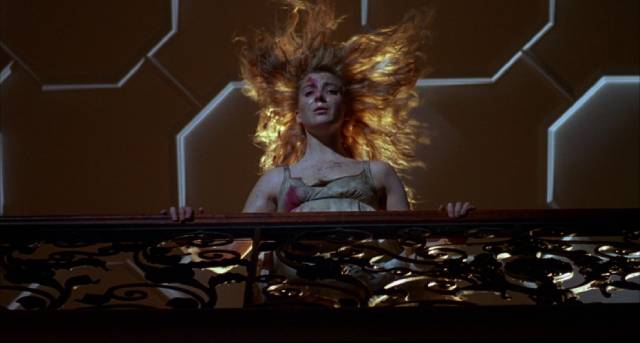
The BFI Blu-ray includes a commentary by film historian Matthew Melia and Russell’s wife Lisi recorded for a 2017 U.S. release, as well as an interview with Julian Sands from the same source. There’s a new interview with Volk about the writing of the script and his experience working with Russell, as well as an audio conversation between Russell and critic Derek Malcolm.
The disk also provides brackets for Russell’s career with the inclusion of his early amateur film Amelia and the Angel (1958) and his final feature, The Fall of the Louse of Usher (2002), for which consumer video technology allowed Russell to return to amateur filmmaking. Shot in and around his own home with the participation of family and friends and no creative constraints imposed by producers or distributors, this chaotic feature shows Russell at his most playful. Its origins lay in a script he had developed in Hollywood two decades earlier, based on a number of Poe stories, updated to the present. Rock star Roddy Usher (James Johnson), having murdered his wife Annabelle Lee (Emma Millions), whom he bricks up behind a wall, is sent to the asylum of Dr. Calahari (Russell himself). The loose, improvisatory story incorporates elements from The Pit and the Pendulum, The Facts in the Case of M. Valdemar and other stories, all very much tongue-in-cheek and rendered with lo-fi, DIY ingenuity.
*
Addendum: Mary Shelley’s Frankenstein (Kenneth Branagh, 1994)
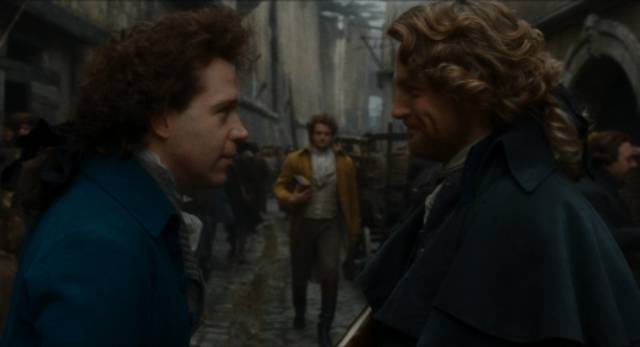
Purely by coincidence, shortly after watching Gothic I picked up a sale copy of Kenneth Branagh’s Frankenstein aka Mary Shelley’s Frankenstein (1994) from Arrow. I also hadn’t seen this since its original theatrical release, when I hadn’t liked it much. This may partly have been due to my dislike of Francis Ford Coppola’s Dracula (1992), which had inaccurately been touted as the first really faithful adaptation of Bram Stoker’s novel – which it certainly wasn’t. Branagh’s movie (produced by Coppola) was sold with the same claim, which had coloured my response. Watching it again, I was reminded of what I didn’t like about the film, but was surprised to find that it actually is quite faithful as far as the narrative goes. The problem is Branagh’s conception, which is distractingly overblown, with himself cast as a swashbuckling, occasionally shirtless action hero rather than a studious, solitary medical student obsessed with an idea which leads him into increasingly dark places.
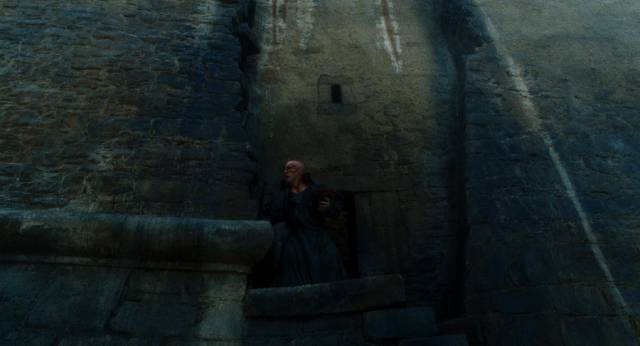
Rather than a dank attic workshop where he splices together pieces of dead bodies into his “new man”, he has a vast lab, bigger and more complicated than the one created by Charles D. Hall and Kenneth Strickfaden for James Whale’s Frankenstein (1931). Everything about Branagh’s version is too big, too over-designed, too flashy, distracting from the narrative … which is a pity, because the script (by Frank Darabont and Steph Lady) does hit most of the key points of Mary Shelley’s story, even adding some interesting nuances along the way. There’s also a fine cast – Helena Bonham Carter as Elizabeth, Tom Hulce as Frankenstein’s fellow student Henry, Ian Holm as his father, Robert Hardy and John Cleese as his teachers. But perhaps most unexpectedly, Robert DeNiro gives the Creature the depth and dignity of the character as written by Shelley, a sensitive, cultured figure rather than a lumbering brute, suffering because he is fully aware of the unwarranted way he’s treated by others who have no idea of his actual nature because they’re blinded by the monstrosity imposed on him by his creator.
Comments